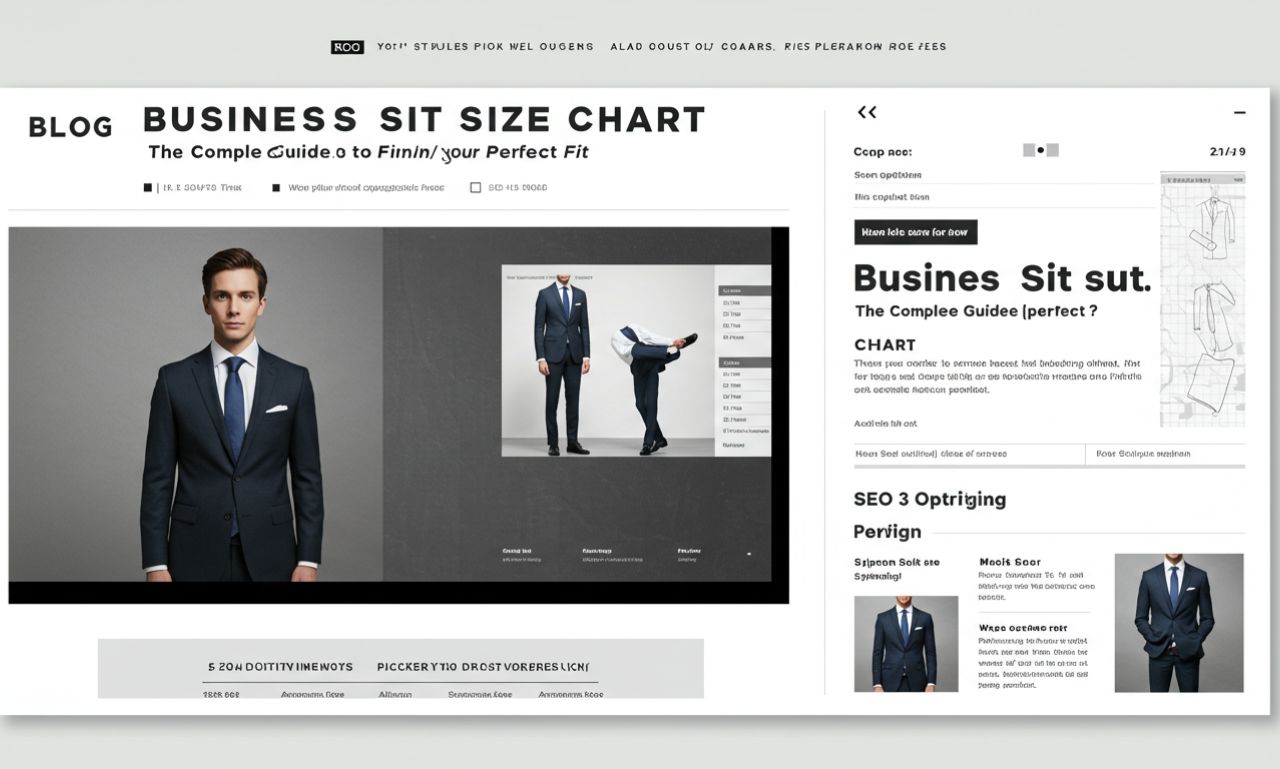Shopping for a suit can feel intimidating. Many people struggle with choosing the right size—shoulders too tight, sleeves too long, or trousers pooling at the ankles. A poorly fitted suit can ruin your confidence, while the right fit makes you look sharp, professional, and comfortable.
That’s where a business suit size chart comes in. By understanding how sizing works across chest, waist, sleeve length, and inseam, you can save time, avoid tailoring mistakes, and ensure your next suit looks like it was made for you. This guide breaks down everything you need to know, from standard suit measurements to international conversions, so you can shop smart whether online or in-store.
Why Suit Sizing Matters in Business and Formal Wear
-
First impressions: A well-fitted suit signals professionalism.
-
Comfort: Ill-fitting suits restrict movement.
-
Cost-effectiveness: Correct sizing reduces tailoring expenses.
-
Versatility: Suits that fit well can be dressed up or down.
How to Read a Business Suit Size Chart
Most suit sizes combine chest measurement with a drop number (the difference between chest and waist).
-
Example: A size 40R means a 40-inch chest with a “Regular” length jacket.
-
Drop numbers usually range from 6–7 inches (e.g., a 40 chest = 34 waist).
-
Fit options: Slim fit, regular fit, or classic fit.
Standard Business Suit Size Chart (U.S.)
| Size | Chest (inches) | Waist (inches) | Jacket Length | Notes |
|---|---|---|---|---|
| 36S | 36 | 30 | Short | For men 5’4″–5’7″ |
| 38R | 38 | 32 | Regular | For men 5’8″–6’0″ |
| 40R | 40 | 34 | Regular | Standard fit |
| 42L | 42 | 36 | Long | For men 6’1″+ |
| 44L | 44 | 38 | Long | Broader build |
(Note: Brands like Hugo Boss, Armani, and Brooks Brothers may vary slightly. Always check their specific charts.)
International Suit Size Conversion Chart
| US Size | UK Size | EU Size | Jacket Label Example |
|---|---|---|---|
| 36 | 36 | 46 | 36R / EU 46 |
| 38 | 38 | 48 | 38R / EU 48 |
| 40 | 40 | 50 | 40R / EU 50 |
| 42 | 42 | 52 | 42R / EU 52 |
| 44 | 44 | 54 | 44R / EU 54 |
Measuring Yourself for the Perfect Fit
-
Chest – Measure around the fullest part under your arms.
-
Waist – Measure just above your hip bone where trousers sit.
-
Sleeve length – From shoulder seam to wrist bone.
-
Shoulders – Across the back from one shoulder to the other.
-
Inseam – From crotch to ankle bone.
Pro tip: Always measure in inches with a soft measuring tape, and ask someone to help for accuracy.
Common Fit Issues (and How to Fix Them)
-
Jacket too tight across chest → Size up or choose a different fit style.
-
Sleeves too long → Tailor to show ¼ inch of shirt cuff.
-
Trousers bunching → Adjust inseam for a clean break.
-
Shoulders slouching → Wrong jacket size; tailoring won’t fix it.
Business Suit Sizing for Different Body Types
-
Slim build → Opt for slim-fit cuts with narrow lapels.
-
Athletic build → Consider a drop 7 or 8 for broader shoulders and smaller waist.
-
Larger build → Classic fit suits offer more room in chest and midsection.
Quick Suit Size Finder
Q: How do I know what size business suit to buy?
Measure your chest, subtract 6 inches for waist, and select the jacket length (Short, Regular, or Long) based on your height. Example: 40-inch chest, 34-inch waist, 5’10” = 40R.
FAQs About Business Suit Size Charts
1. How do I convert EU suit sizes to US?
Subtract 10 from the EU size. Example: EU 50 = US 40.
2. Do all brands use the same suit size chart?
No, sizing may vary slightly across designers. Always check the brand’s chart.
3. What does 40R mean in a suit?
40-inch chest, Regular jacket length.
4. Should I size up if buying online?
If between sizes, size up—tailoring down is easier than letting out.
5. Can suit pants be altered?
Yes, waist and inseam adjustments are common, but jacket shoulders are harder to alter.
Conclusion
A business suit size chart is the starting point to finding your perfect fit. With the right measurements and an understanding of international conversions, you can confidently buy suits online or in-store without guesswork. Remember—fit is everything. When in doubt, consult a professional tailor to refine the details.
Ready to upgrade your wardrobe? Grab your tape measure, check the chart, and make your next business suit your best one yet.

